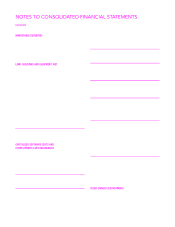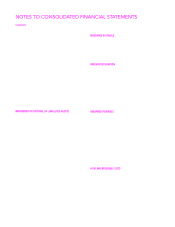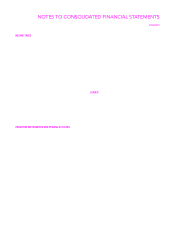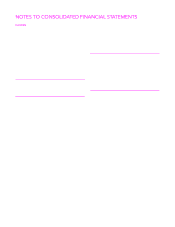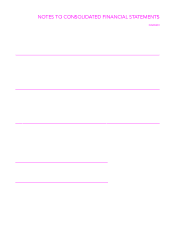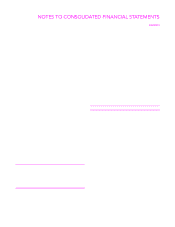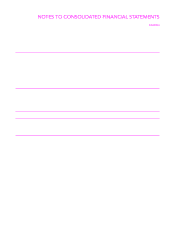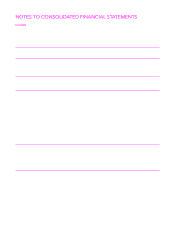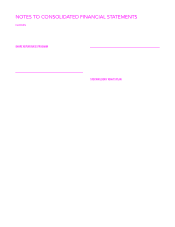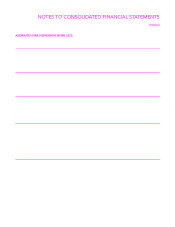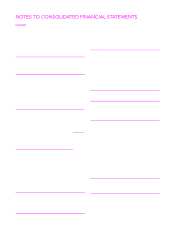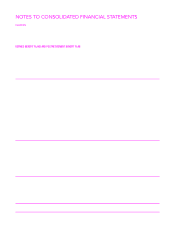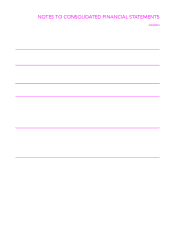Red Lobster 2015 Annual Report Download - page 46
Download and view the complete annual report
Please find page 46 of the 2015 Red Lobster annual report below. You can navigate through the pages in the report by either clicking on the pages listed below, or by using the keyword search tool below to find specific information within the annual report.
42
NOTES TO CONSOLIDATED FINANCIAL STATEMENTS
DARDEN
NOTE 10
DERIVATIVE INSTRUMENTS AND HEDGING ACTIVITIES
We use financial and commodities derivatives to manage interest rate, equity-
based compensation and commodities pricing and foreign currency exchange
rate risks inherent in our business operations. By using these instruments, we
expose ourselves, from time to time, to credit risk and market risk. Credit risk
is the failure of the counterparty to perform under the terms of the derivative
contract. When the fair value of a derivative contract is positive, the counter-
party owes us, which creates credit risk for us. We minimize this credit risk
by entering into transactions with high-quality counterparties. We currently
do not have any provisions in our agreements with counterparties that would
require either party to hold or post collateral in the event that the market value
of the related derivative instrument exceeds a certain limit. As such, the maximum
amount of loss due to counterparty credit risk we would incur at May 31, 2015,
if counterparties to the derivative instruments failed completely to perform,
would approximate the values of derivative instruments currently recognized
as assets on our consolidated balance sheet. Market risk is the adverse effect
on the value of a financial instrument that results from a change in interest
rates, commodity prices, or the market price of our common stock. We minimize
this market risk by establishing and monitoring parameters that limit the types
and degree of market risk that may be undertaken.
We are currently party to interest-rate swap agreements with $200.0 million
of notional value to limit the risk of changes in fair value of $100.0 million
of the $121.9 million 4.500 percent senior notes due October 2021 and
$100.0 million of the $500.0 million 6.200 percent senior notes due
October 2017. The swap agreements effectively swap the fixed-rate obliga-
tions for floating-rate obligations, thereby mitigating changes in fair value
of the related debt prior to maturity. The swap agreements were designated
as fair value hedges of the related debt and met the requirements to be
accounted for under the short-cut method, resulting in no ineffectiveness in
the hedging relationship. During fiscal 2015, 2014 and 2013, $3.6 million,
$2.9 million and $3.0 million, respectively, was recorded as a reduction to
interest expense related to net swap settlements.
We enter into equity forward contracts to hedge the risk of changes in
future cash flows associated with the unvested, unrecognized Darden stock
units. The equity forward contracts will be settled at the end of the vesting
periods of their underlying Darden stock units, which range between four and
five years. The contracts were initially designated as cash flow hedges to the
extent the Darden stock units are unvested and, therefore, unrecognized as a
liability in our financial statements. As of May 31, 2015, we were party to equity
forward contracts that were indexed to 0.8 million shares of our common
stock, at varying forward rates between $41.46 per share and $52.66 per
share, extending through August 2018. The forward contracts can only be
net settled in cash. As the Darden stock units vest, we will de-designate
that portion of the equity forward contract that no longer qualifies for hedge
accounting and changes in fair value associated with that portion of the equity
forward contract will be recognized in current earnings. We periodically incur
interest on the notional value of the contracts and receive dividends on the
underlying shares. These amounts are recognized currently in earnings as
they are incurred or received.
We entered into equity forward contracts to hedge the risk of changes
in future cash flows associated with recognized, cash-settled performance
stock units and employee-directed investments in Darden stock within the
non-qualified deferred compensation plan. The equity forward contracts are
indexed to 0.2 million shares of our common stock at forward rates between
$46.17 and $51.95 per share, can only be net settled in cash and expire
between fiscal 2016 and 2019. We did not elect hedge accounting with the
expectation that changes in the fair value of the equity forward contracts would
offset changes in the fair value of the performance stock units and Darden
stock investments in the non-qualified deferred compensation plan within
general and administrative expenses in our consolidated statements of earnings.


